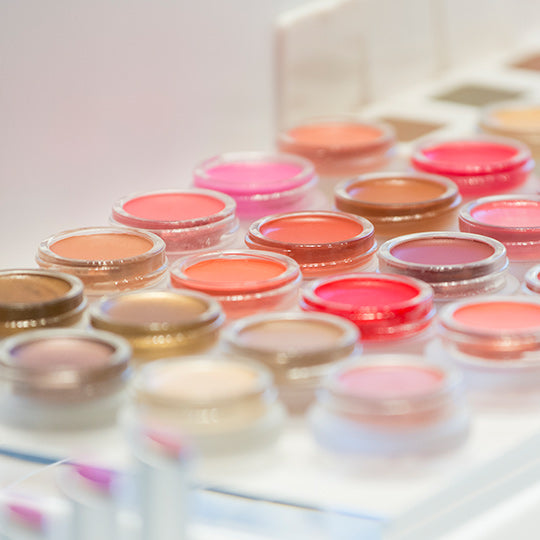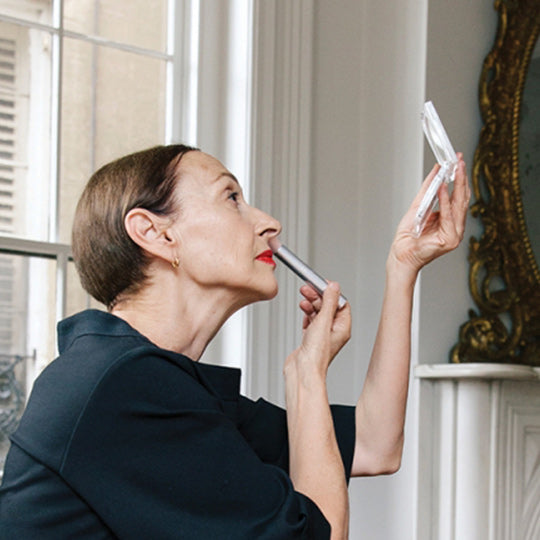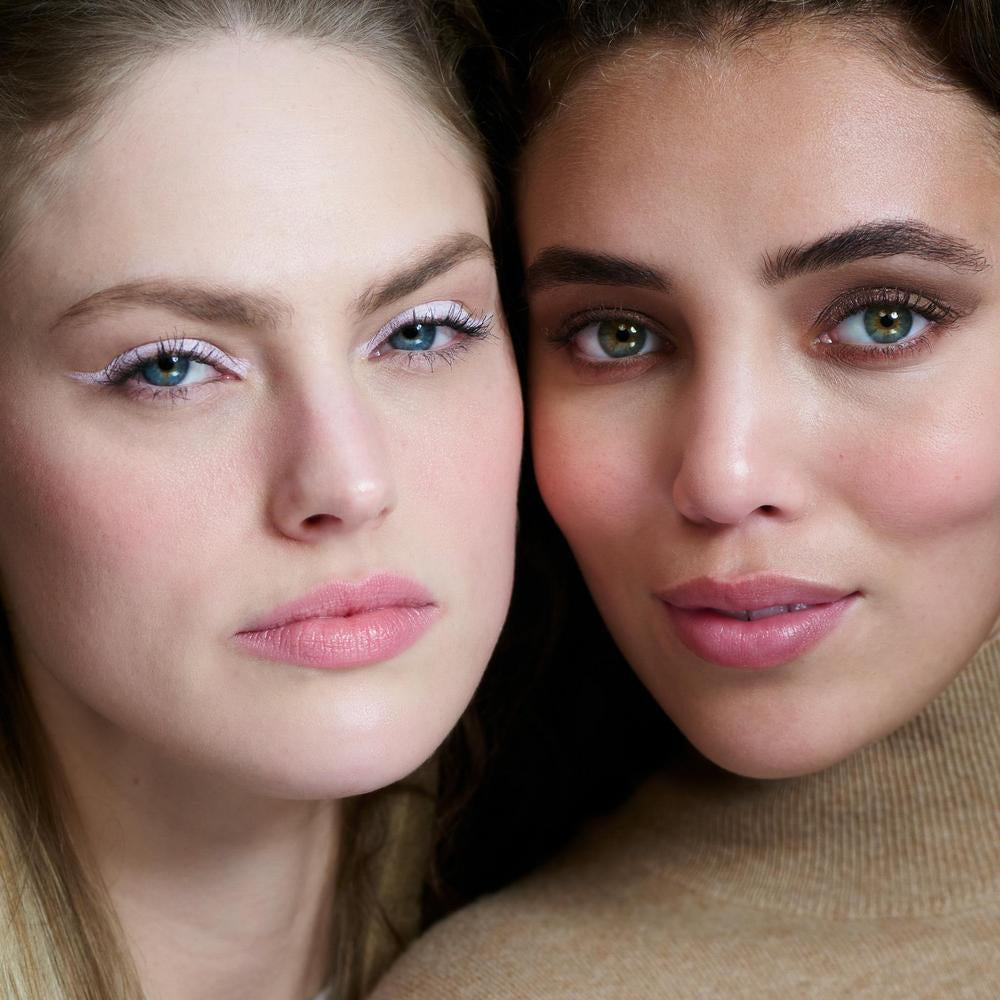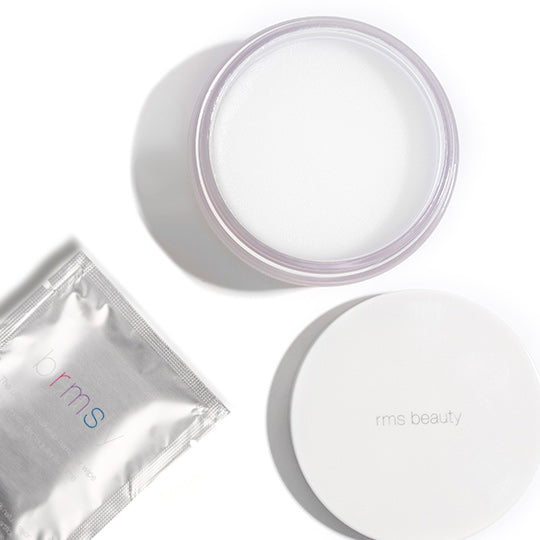How Long Does Makeup Last, and When Should You Toss 'em Out

Clumpy mascaras, liquid foundations that have permanently separated, and lip colors that smell a little off are all hallmarks of products that have probably been in your makeup bag a little too long. After all, when was the last time you wore that frosted pink lipstick?
Makeup generally has a great, long term shelf life (upwards of one to two years), however there are caveats and rules to follow if you want to get the most out of your products. Using products that are expired can result in skin sensitivity issues, blemishes, and total failure of the product to perform as expected.
If you’re questioning the integrity of the products on your shelf, we can help. Your expert team at RMS Beauty will explain why makeup expires, how it expires, and what you can do to preserve the shelf life of your products for as long as possible.
Does makeup really expire? Yes and no.
Some products, like mineral loose powders, can last indefinitely but other products, like lip color and mascara, will begin to lose their efficacy in certain periods of time. Many products will have a small number somewhere on the packaging that shows how many months the product should last once it has been opened (usually, you’ll see 6, 12, 24, or 36). This number usually appears on a little symbol that looks like a jar with an open lid.
It’s important to always pay attention to your product packaging not only so you know when they expire, but also to educate yourself about the product ingredients. Some products, for instance, contain high levels of preservative ingredients which may make them last longer, but come with their own set of risks.
What Causes Makeup to Expire?
Once you open a brand new product, factors in your environment begin to make it spoil, just like food. This is why most products have a “best used by” date recommendation. If you’re thinking you’re pretty careful with your products (washing brushes, using clean hands, etc.) you may be surprised to find out what’s really making your products spoil.
- Bacterial growth. No matter how clean your brushes, sponges, or fingers may be, every time you tap them onto your product you expose the product to bacteria. Transferring a brush from your face back into loose powder, for instance, relocates bacteria from your face to your powder. That bacteria can cause your products to spoil depending on ingredients. Some are more susceptible than others
- Ingredient instability. Your favorite liquid foundation now looks like a grade school oil and water science experiment (it’s separated). This is due to ingredient instability. The ingredients in your products lose their stability over the course of time, which makes your products less effective. In nature, oil and water do not mix, but in the cosmetic industry they use emulsifiers to make the two opposing ingredients mix. When they separate the product, that creates an undesirable product.
- Oxidation. The moment you open a new cosmetic product, you expose it to oxygen, and the oxidation process. Oxygen can change the composition of your products, similar to the way that leaving a cut apple causes it to turn brown when left sitting out. At RMS Beauty we use airtight packaging when needed to preserve the integrity of the product. This added step goes a long way in preserving the product.
There are other reasons your makeup may not last as long as you expect (you accidentally leave a product open, etc.) but these are the most common reasons your products will go bad.
Does Makeup with Cleaner Ingredients Have a Shorter Lifespan Since It’s Fresher?
Short answer, yes. This isn’t unfortunate, however, because it means you’re using products that have safe, natural ingredients that work synergistically with your skin. We compare this to food. Would you want a salad that has been sitting around for 2 weeks? You ideally want to use the product at its height of its healing properties, so it goes without saying the fresher the ingredients, airtight containers, and the proper preservation system speaks volumes.
Just like real, whole food spoils, the cleanest makeups will spoil over time because of their real, natural ingredients. RMS Beauty doesn’t just use “clean” ingredients, we use living ingredients.
Our cosmetics are made with food-grade ingredients that are as close to their natural state as possible. In fact, many of our products contain raw ingredients, like raw, unrefined, organic coconut oil, which is cold-centrifuged (superior over cold pressed as cold pressing still involves heat). Cold-centrifuge guarantees a raw and living product that preserves the natural, life force state of the oil.
The benefit of using cosmetics that are the cleanest in the industry, like the ones available from RMS Beauty, is that you can use them with complete peace of mind knowing the ingredients in your products aren’t harmful to your body or the environment.
Synthetic ingredients often added to products to keep them fresher longer include synthetic preservatives, synthetic alcohols, synthetic antioxidants, and more. Talcs, clays, minerals and diatomaceous earth are also added for shelf life but these can dry your skin, and over time, cause premature aging. Drying agents make the product last longer on the skin but they also absorb your own natural oils, leaving a drying effect on the skin along with long-term aging.
The absence of synthetic preservatives is a bonus for using RMS Beauty products. If preservatives are needed, we use ingredients that have preservative qualities, or we use the new natural preservatives that are formulated with the clean beauty market in mind. Taking this natural approach guarantees the ingredients are always fresh, food-grade, and the closest to their natural state as possible and that includes preservative properties.
How do I know when my makeup expires?
The easiest way to determine if a product is still safe to use is by making sure it hasn’t expired according to the manufacturer date on the packaging. However, if you’ve lost the packaging, you can inspect the product to determine if it’s still good. Products that need to be tossed include ones that:
- Have separated
- Changed color -- this can happen also just from light (both synthetic and sunlight) so oils we always suggest should be kept in a dark place
- Smell “off” -- yes some oils have a very short shelf life, coconut oil actually has a natural shelf life of 2-3 years, other oils can be 1-3 months. RMS Beauty does not use those short shelf life oils!
- Have changed texture
If any of those are true of your makeup products, it is well past its expiration date and should be discarded. If a product doesn’t contain water, it can last up to two years, but it doesn’t mean it will. Environmental factors like the ones mentioned above can make your products spoil sooner.
Typical Recommended Lifespans of the Most Common Makeup Products
You’ve lost the product packaging, but you know you’ve had the product for a while. How can you know if you should use it? Here’s a quick guide to help you determine if your product is good or bad.
Lipstick
You can expect a lipstick to last between 12 to 24 months. Lipstick can harbor bacteria, especially if it doesn’t contain preservatives. The oils in lipstick can become rancid -- mostly oils with an unstable shelf life have been used, but in some cases you can still continue to use it if it smells and looks the same as when you opened it. Waxes can give them a waxy smell but most manufacturers will camouflage that with a fragrance or essential oil. In most cases we suggest you replace it promptly as rancid oils can cause premature aging.
Primer
Liquid primer will last approximately 12 to 24 months. The ingredients in primer (especially primer laden with preservatives) will last upwards of a year, however the ingredients become unstable after that time, making it a wise decision to replace it if you haven’t used it all. It’s really unwise to use it much longer as most primers contain water, making them prime real estate for bacteria which can cause blemishes.
Liquid Foundation
Like primers, liquid foundations can last anywhere from 6 to 24 months. Some foundations will expire sooner if they contain raw ingredients, but the benefit is that you won’t be slathering potentially toxic preservatives on your skin. Using a liquid foundation after it has separated, changed colors, or has an “off” smell can make it completely ineffective and can cause blemishes on your skin.
Powdered Foundation
A powdered foundation can last 24 months to the end of use if it is properly stored and used correctly. A loose, mineral powder can last indefinitely if you use clean brushes with it and keep it away from moisture. Moisture will ruin powdered foundation (and most other cosmetic products actually) and change the consistency completely.
Concealer
You can expect to use your favorite concealer from 6-24 months, but again, the lifespan will be determined by the product ingredients. Liquid concealers should be tossed after one year. Concealers hide blemishes, but if you use an expired concealer, it can cause them.
Mascara
Mascara should always be replaced after three months of use, if it lasts that long. There’s really no way to keep bacteria out of your mascara tube, and using a product on your lash line that’s full of bacteria can result in an eye infection. In this case, it isn’t necessarily that the product goes bad, but rather that the risk of infection that is concerning.
Liquid Eyeliner
Liquid eyeliner will last between 2-3 months, and this includes gel and cream formulas. Again, this is a product you’re using close to your eye, and spreading bacteria around that area is never safe. Avoiding lining the inner corner of your eye -- it will make the liner last longer and protect it from bacteria.
Pencil Eyeliner
You can get more mileage out of a pencil eyeliner because you can sharpen the pencil to effectively remove bacteria and preserve the safety of the product. You can use an eye pencil for up to 12 months.
Brow Powder/Pencil
Like eye pencils, you can use a brow powder and brow pencil for up to twelve months. Sharpening the pencil will allow you to use it longer, and making sure you always use a clean brush in your brow powder can lengthen the shelf life.
Eyeshadow (Powder/Pressed)
Plan on replacing your eyeshadow anywhere from 12-24 months after use. Not only can the pigments change, the texture can change due to oils on your skin transferring to the product if you aren’t using a clean brush. If your eyeshadow breaks or comes apart, you can use a small portion of alcohol to gently press it back together to get a little more mileage.
Eyeshadow (Cream)
Creme eyeshadows can last up to one year depending on the ingredients. A cream shadow with clean, living ingredients should be used within this time frame to protect the integrity of the ingredients.
Final Tips for Extending Your Makeup’s Shelf Life
If you’re finding more and more expired products in your makeup bag, there are steps you can take to make sure they last as long as they should.
If you’re using cleaner beauty products with living ingredients, you can even store them in the refrigerator to lengthen their shelf life. Additionally, you can mete out small portions of your product in small containers which can make your product last longer.
For products like lipstick and gloss, keeping them out of humidity and extreme temperatures will help them last longer (and avoid a mess). Using clean sponges and brushes each time you apply your makeup will also help preserve the ingredients and integrity of the product.
For added life expectancy of the product beyond the state’s time frame, products that are in use can be stored in the fridge. However, they need to go to room temperature again for superior application.
At RMS Beauty we suggest using all of our cream products 1 year after opening. Our reasoning behind this is we want the products used at the height of the healing properties of the ingredients. In testing they do last longer but the healing properties start to weaken.
Keeping your makeup bag free from expired products is easy when you know how and when they expire!
This information for RMS was fact checked by an expert in the beauty industry: Rose-Marie Swift
Sources:
http://www.beautytruth.com/preservatives
https://www.ncbi.nlm.nih.gov/pmc/articles/PMC6099538/#B3-molecules-23-01571




